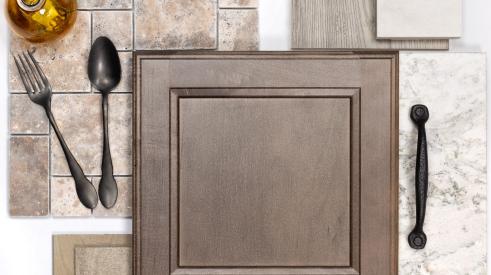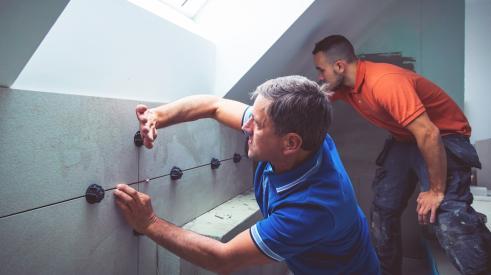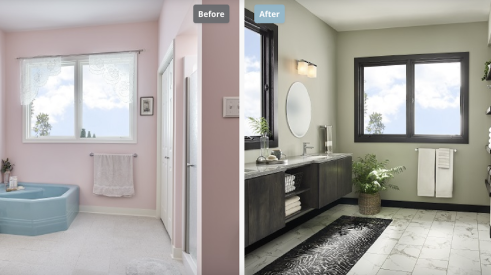The rating and review site Angie’s List released a survey a few years ago showing that home improvement contractors still prefer to do business the old-fashioned way: paying by check. And up until now, homeowners were fine with that. Anticipating the size of the transaction, they typically save beforehand so that they are able to afford the project.
Plastic People
But the contractor preference for checks over other forms of payment—the exception is large home improvement companies, which offer and aggressively sell financing—may need some adjusting. Technology has made credit card payment so convenient that many people now buy anything and everything with a card rather than paying with cash, let alone writing a check, which is seen by some as much too 20th century. Card buyers are becoming the majority.
Citing a report in Bankrate.com, an article in The Washington Post last year pointed out that eight in 10 people carry less than $50 in cash in their wallets on a regular basis, that 50 percent carry $20 or less each day, and that 9 percent carry no cash at all. “Consumers prefer to pay with plastic, debit or credit, or some other type of mobile technology,” says Greg McBride, the site’s chief financial analyst.
If you’ve stood in line watching one person after the next pay for coffee or sandwiches using plastic and have wondered where all this is going, well, the trend isn’t winding down. Plastic will soon trump cash in retail transactions, according to the website NerdWallet.com, which says that by 2017, “just 23% of point-of-sale purchases will be made with cash,” while credit card purchases will be 33 percent.
Under the Table
But forget credit cards—some contractors don’t even want a check. Instead, they’ll ask for cash, as in greenbacks, usually in exchange for a discount, or the promise to move that job to the top of the schedule. Since cash is often untraceable, no one has any idea of how widespread the practice is. But it’s widespread enough that if you Google “contractor wants cash,” you’ll see close to 12 million search results. Homeowners wondering if they should pay it are directed by various Internet sites to avoid doing so, especially if they’re being asked to pay cash before the work has begun. The IRS has special cash reporting requirements and will throw the book at businesses that are paying employees cash as a way of avoiding paying income taxes. “Cash still has to be reported as income, and you still have to keep records,” Robert W. Wood points out in a Forbes article titled “Paying in Cash? Careful, It Can Mean Jail.”
Not surprisingly, the request for payment in cash often comes with an understanding that the agreement between contractor and customer will be oral, not written. Internet experts, of course, suggest that there must always be a written contract (a requirement that varies by state) and invariably strongly suggest not paying a contractor in cash, especially for materials before the job starts. Among the reasons: A cashed check is a key part of the paper trail, should homeowners later find themselves in dispute with the contractor.
Credit Cards Assumed
Though most contractors continue to prefer a check, they may have little choice, at some point. If consumers prefer plastic everywhere else, why would home improvement transactions be the exception? In fact, it’s already happening. MarketWatch recently published a chart based on a SunTrust poll of 1,300 homeowners. It shows that while the percentage of people planning to invest $5,000 to $10,000 this year in home improvements hasn’t changed, but the number who plan to pay by credit card has gone up (from 21 percent to 30 percent) and those planning to pay by dipping into savings has dropped. Few (4 percent) will liquidate investments to pay for home improvements. Credit availability changes everything. “Taking money out of a hot stock market doesn’t necessarily make sense,” says SunTrust business development officer Todd Nelson, “especially when well-qualified consumers can borrow at extremely attractive rates.”
Traditionally, homeowners looking to finance a project could refinance their property (a secured loan), get an unsecured loan for less (and at a higher rate of interest), or take out a home equity loan or a home equity line of credit. Nolo, the legal site, notes that these decisions are based on project cost, how much cash homeowners have on hand, how long the project lasts, whether other projects are scheduled further down the road, and the amount of equity in the home. Homeowners prefer to pay with a credit card if the cost of the project is low, that is, less than $10,000. There are, The Wall Street Journal points out, pros and cons to using a credit card to pay for a big-ticket purchase, such as a home improvement.
Since financial experts suggest limiting credit use to 30 percent of available credit to maintain a healthy credit score, taking that card to the limit to pay for a roof replacement is unwise. Unless—best-case scenario—the homeowner has enough cash in the bank to pay off the balance at the end of the next billing cycle and can therefore pay with the card and reap the points that credit card companies offer.
Fees and Equipment
Contractors have two basic reasons for not wanting to be bothered with credit cards. Fees are the biggie. They eat up as much as 3 percent of total project cost. Smart contractors, of course, will build that into their pricing. But that means their price will necessarily be at least a little higher. Up until recently, equipment was a barrier for some. But virtual terminals that plug into a laptop or hand-held device, creating a mobile point-of-sale system, are now available and in widespread use, including among contractors who specialize in repair services, such as plumbers. (For a complete discussion of equipment available and how it works, see “How to Accept Credit Cards Online, In-Store or Anywhere: 2015 Guide” in Business News Daily.)
But if you solve that problem, it’s still not simple. Paul Downs, a cabinet shop owner who blogs for The New York Times, wrote a series about use of credit cards called “What You Need to Know About Credit Card Processing.” He analyzes, in painstaking detail, how banks and credit card companies generate their fees from businesses. What prompted this series was Downs adding up his company’s credit card transactions for the year—$639,000—and his charges and fees. He realized that he was spending a total processing cost of 4.27 percent, “considerably more than the 2.1 percent or so that I initially signed up for.”
Many home improvement contractors don’t like dealing with credit cards. But the reality is: those contractors are bucking a major trend in the way people pay
Add new comment
Related Stories
3 Areas Successful Remodelers Focus On
Industry advisor Mark Richardson shares what separates the losing from the winning in today’s market
Peppermill Finish
NAHB: Remodelers Face Challenges and Opportunities
Remodelers face a uniquely strong market yet remain challenged by codes and costs
Selling Your Company to Your Team
From company valuation to terms of the transfer, here’s a look at how three different remodelers made the deal work
Re-Bath Expands its Reach with New Franchise
The company signs a deal with brothers who are first-time franchisees
Pro Remodeler’s 2024 Pinnacle Experience Reaches New Heights
The sold-out event covered leadership, lead gen, sales, and technology
Brian Gottlieb Receives Remodeling Mastery Award
Presented by industry icon, Mark Richardson, the award celebrated Gottlieb’s extraordinary impact on remodeling
What's Beyond the Hammer?
Working with Brian Gottlieb on the book Beyond the Hammer provided a masterclass on how to build an aligned team
5 Counterintuitive Strategies to Improve Your Business
Follow these strategies to inspire employees, instill trust, and beat the competition
Couple Act As Much More Than General Contractors
How LBR Partners uplifts and educates their Spanish-speaking trade partners













